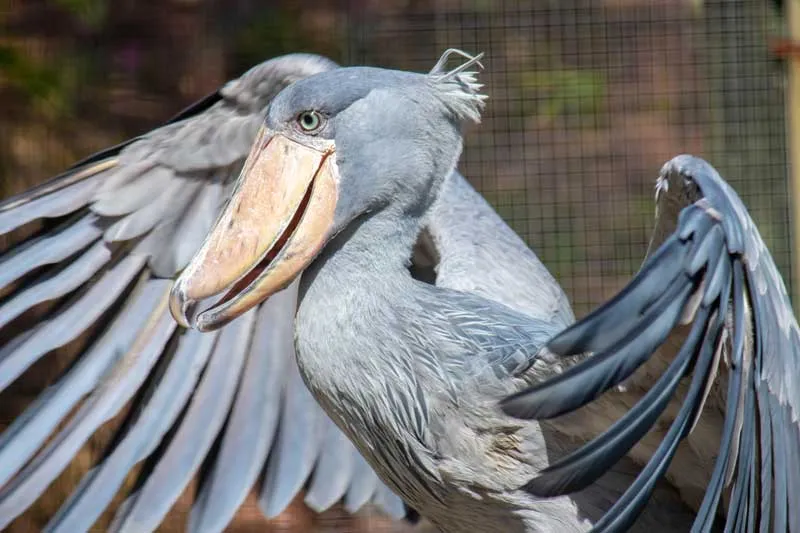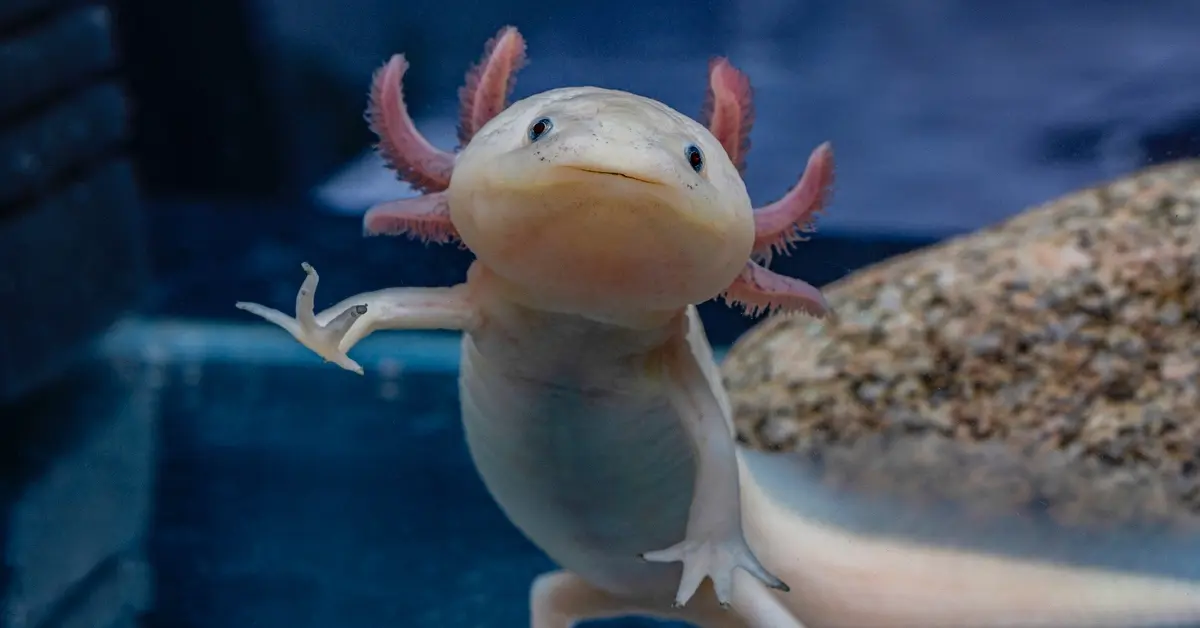zoomacademia.com – The Shoebill Stork (Balaeniceps rex) is one of the most extraordinary and unique birds in the world, often described as a “living dinosaur.” With its massive bill, prehistoric appearance, and peculiar behaviors, this large wading bird has captured the fascination of wildlife enthusiasts and ornithologists alike. Native to the swamps and wetlands of tropical East Africa, the shoebill is an emblem of the region’s biodiversity and an indicator of healthy wetland ecosystems.
Physical Characteristics
The shoebill stork gets its name from its enormous, shoe-shaped beak, which can grow up to 9 inches (23 cm) long and 5 inches (12 cm) wide. This impressive bill is not just for show; it is an essential tool for catching and consuming its prey. The bird uses the sharp edges of its beak to grasp and decapitate fish, turtles, and even baby crocodiles.
Standing at an average height of 4 to 5 feet (1.2 to 1.5 meters) with a wingspan of over 7 feet (2.1 meters), the shoebill is a towering presence in its habitat. Its slate-gray plumage, large eyes, and slow, deliberate movements give it a solemn and ancient appearance, often leading to comparisons with prehistoric creatures.
Habitat and Distribution
Shoebills are found primarily in the freshwater swamps and marshes of East and Central Africa, including countries such as Uganda, South Sudan, Zambia, and the Democratic Republic of Congo. They prefer habitats with dense vegetation and shallow, stagnant water, which are ideal for hunting their preferred prey: lungfish and other aquatic animals.
Behavior and Hunting Techniques
One of the most remarkable aspects of the shoebill stork is its hunting technique. Known for its patient and stealthy approach, the bird will stand motionless for long periods, waiting for an unsuspecting prey to come within striking distance. Once the target is identified, the shoebill lunges with lightning speed, using its powerful bill to capture and kill its meal. This hunting style has earned the bird a reputation as an apex predator of its wetland environment.
Despite their fearsome hunting abilities, shoebills are generally solitary and non-aggressive toward humans. They communicate through bill-clattering, a sound similar to a machine gun, often used during courtship or to ward off intruders.
Conservation Status
The shoebill stork is classified as “Vulnerable” by the International Union for Conservation of Nature (IUCN). The primary threats to its survival include habitat destruction, particularly the draining of wetlands for agriculture and human development, as well as poaching and the illegal pet trade. Conservation efforts are underway in many parts of Africa to protect these birds and their habitats. Ecotourism has also played a role in raising awareness about the species, with birdwatchers traveling to regions like Uganda’s Mabamba Swamp to catch a glimpse of this enigmatic bird.
Cultural Significance and Fascination
The shoebill stork’s unique appearance and behavior have made it a symbol of mystery and resilience in many cultures. It has been nicknamed “the whale-headed stork” and “king of the marshes.” Its almost mythical status has drawn comparisons to dragons and other fantastical creatures, further cementing its place in popular imagination.
Conclusion
The shoebill stork is not just a bird; it is a living testament to the wonders of evolution and the importance of preserving our planet’s biodiversity. With its striking appearance and remarkable adaptations, the shoebill serves as a reminder of the beauty and intricacy of the natural world. Protecting this species and its habitat ensures that future generations can marvel at this incredible bird and the ecosystems it calls home.







